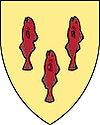
Radcliffe College was a women's liberal arts college in Cambridge, Massachusetts that was founded in 1879. In 1999, it was fully incorporated into Harvard College.

Harvard College is the undergraduate college of Harvard University, a private Ivy League research university in Cambridge, Massachusetts, United States. Part of the Faculty of Arts and Sciences, Harvard College is Harvard University's traditional undergraduate program, offering AB and SB degrees. It is highly selective, with fewer than four percent of applicants being offered admission as of 2022.

LeBaron Russell Briggs was an American educator. He was appointed the first dean of men at Harvard College, and subsequently served as dean of the faculty until he retired. He was concurrently president of Radcliffe College and the National Collegiate Athletic Association.

Pforzheimer House, nicknamed PfoHo (FOE-hoe) and formerly named North House, is one of twelve undergraduate residential Houses at Harvard University. It was named in 1995 for Carol K. and Carl Howard Pforzheimer Jr, major University and Radcliffe College benefactors, and their family.
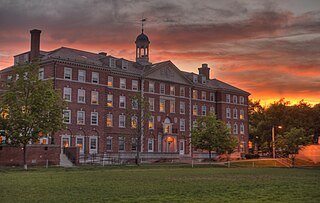
The Radcliffe Quadrangle at Harvard University, formerly the residential campus of Radcliffe College, is part of Harvard's undergraduate campus in Cambridge, Massachusetts, United States. Nicknamed the Quad, it is a traditional college quad slightly removed from the main part of campus.

John Winthrop House is one of twelve undergraduate residential Houses at Harvard University. It is home to approximately 400 upperclass undergraduates.
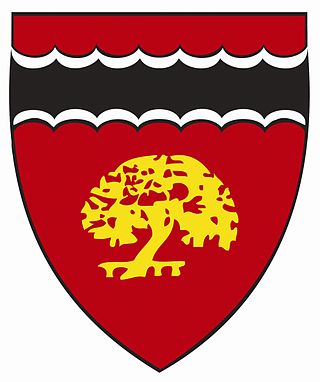
Currier House is one of twelve undergraduate residential Houses of Harvard College, in Cambridge, Massachusetts, United States. Opened in September 1970, it is named after Audrey Bruce Currier, a member of the Radcliffe College Class of 1956 who, along with her husband, was killed in a plane crash in 1967. The area was formerly used as housing for Radcliffe College, and as such the four towers of Currier House are named for distinguished alumnae of Radcliffe, including the author Barbara Tuchman. Along with Cabot House and Pforzheimer House, Currier is part of the former Radcliffe Quadrangle, known colloquially as simply "the Quad."
Lowell House is one of twelve undergraduate residential Houses at Harvard University, located at 10 Holyoke Place facing Mount Auburn Street between Harvard Yard and the Charles River. Officially, it is named for the Lowell family, but an ornate ALL woven into the ironwork above the main gate discreetly alludes to Abbott Lawrence Lowell, Harvard's president at the time of construction. Its majestic neo-Georgian design, centered on two landscaped courtyards, received the 1938 Harleston Parker Medal and might be considered the model for later Harvard houses nearby. Lowell House is simultaneously close to the Yard, Harvard Square, and other Harvard "River" houses, and its blue-capped bell tower, visible for many miles, is a local landmark.
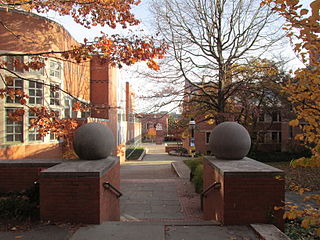
Lee D. Butler College is one of the seven residential colleges of Princeton University, founded in 1983. It houses about 500 freshmen and sophomores, 100 juniors and seniors, 10 Resident Graduate Students, a faculty member in residence, as well as a small number of upperclass Residential College Advisors. Butler is a four-year college, paired with the former First College. This means juniors and seniors are permitted to live in Butler, with priority for housing given to undergraduates who spent their first two years in either Butler or First.

Agnes Irwin was an American educator, best known as the first dean of Radcliffe College (1894–1909). Prior to that, she served as the principal of the West Penn Square Seminary for Young Ladies in Philadelphia.

The campus housing system at the University of Michigan in Ann Arbor, referred to as University Housing, provides living accommodations for approximately 10,000 undergraduate and graduate students. There is no requirement for first-year students to live in University Housing, yet approximately 97% of incoming students choose to do so. Every year, over 9,500 undergraduate students are housed in 18 residence halls on Central Campus, the Hill Neighborhood, and North Campus. Undergraduates, graduate students, and students with families can live in University Housing apartments in the Northwood Community on North Campus. Seven full-service dining halls as well as several retail shops provide students with daily dining options.
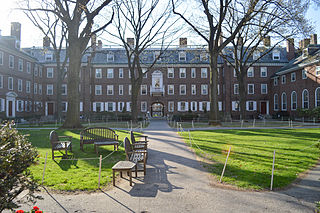
Kirkland House is one of twelve undergraduate residential Houses at Harvard University, located near the Charles River in Cambridge, Massachusetts. It was named after John Thornton Kirkland, president of Harvard University from 1810 to 1828.

Grace Hopkinson Eliot Hall, often called Eliot Hall, is a historic dormitory building on the Radcliffe Quadrangle of Harvard University in Cambridge, Massachusetts. The four story neo-Georgian brick building was built in 1907 to a design by Alexander Wadsworth Longfellow Jr. It is a duplicate of Bertram Hall, which is adjacent, except some of its architectural details were simplified to reduce costs. The house is named in honor of Grace Hopkinson Eliot, the wife of Harvard President Charles W. Eliot. The building is now one of the dormitories of Cabot House.

Bertram Hall at Radcliffe College is an historic dormitory building on the Radcliffe Quadrangle of Harvard University at 53 Shepard Street in Cambridge, Massachusetts. Built in 1901, it was the first dormitory building constructed for Radcliffe College. The building is now one of the dormitories of Harvard's Cabot House. It was listed on the National Register of Historic Places in 1986.

Rice University contains eleven residential colleges which function as the primary housing, dining, and social organizations for undergraduate students. The system was established in 1957 and was inspired by the residential college systems at the University of Oxford and the University of Cambridge as well as the American adaptations of the same at Harvard and Yale. Each student is randomly affiliated with a residential college upon matriculation and becomes a lifetime member of the college. The residential college system takes the place of a Greek system and has contributed to a sense of community that other universities have sought to emulate.

Quincy House is one of twelve undergraduate residential Houses at Harvard University, located on Plympton Street between Harvard Yard and the Charles River. The second largest of the twelve undergraduate houses, Quincy House was named after Josiah Quincy III (1772–1864), president of Harvard from 1829 to 1845. Quincy House's official counterpart at Yale University is Branford College.

The Quad is an approximately 22-acre (8.9 ha) quadrangle on the campus of the University of Alabama located in Tuscaloosa, Alabama. Home to most of the university's original buildings, this portion of the campus remains the geographic and historic center of the modern campus. Originally designed by architect William Nichols, construction of the university campus began in 1828, following the move of the Alabama state capital from Cahaba to Tuscaloosa in 1826. The overall design for this early version of the campus was patterned after Thomas Jefferson's plan for the University of Virginia, with its Lawn and Rotunda. Following the destruction of the campus during the American Civil War, a new Quad emerged in the late 19th and early 20th centuries. Different in form and function from the original design of the early 19th century, the modern Quad continues to fill its role as the heart of the campus. Although surrounded by academic and administrative buildings, only five structures are built directly on the Quad: the Little Round House, Tuomey Hall, Oliver-Barnard Hall, Amelia Gayle Gorgas Library, and Denny Chimes. The remainder of the space is occupied by a grove of trees on the west side and a great lawn on the east. A feature on the northwestern side, known as The Mound, is the site of the old Franklin Hall. A popular gathering place, the Quad is home to pep rallies, a bonfire during homecoming, and numerous day-to-day student activities.
College Houses are a major part of facilitating a community and experience amongst the undergraduates at the University of Pennsylvania. Each house has one Faculty Director and one House Director, with at least two College House Fellows in residence. Many houses host a range of jobs for students, including Residential Advisors, House Councils, Managers and Information Technology assistants. The houses also encourage communities through the wide range of Program Communities within the system.
Since the founding, Stanford University has provided on-campus housing for students. Today, all undergraduate students, most graduate students, and many graduate employees use campus housing. While not all graduate students are eligible for campus or subsidized off-campus housing, of those that are, only 64% are able to take advantage of this opportunity due to the limited housing stock. Student Housing at Stanford is currently part of Residential & Dining Enterprises, an in-house standalone vendor within the Stanford affiliated network of businesses.

The Quadrangle Dormitories are a complex of 39 conjoined residence houses at the University of Pennsylvania, in Philadelphia, Pennsylvania, United States. The architectural firm of Cope and Stewardson designed the houses in an exuberant Neo-Jacobean version of the Collegiate Gothic style, and completed most of them between 1894 and 1912. The dormitories stretch from 36th to 38th Streets and from Spruce Street to Hamilton Walk. West of the Memorial Tower at 37th Street, the houses on the north side follow the diagonal of Woodland Avenue and form a long triangle with the houses on the south side. From 1895 to 1971, the dormitories housed only male students.

